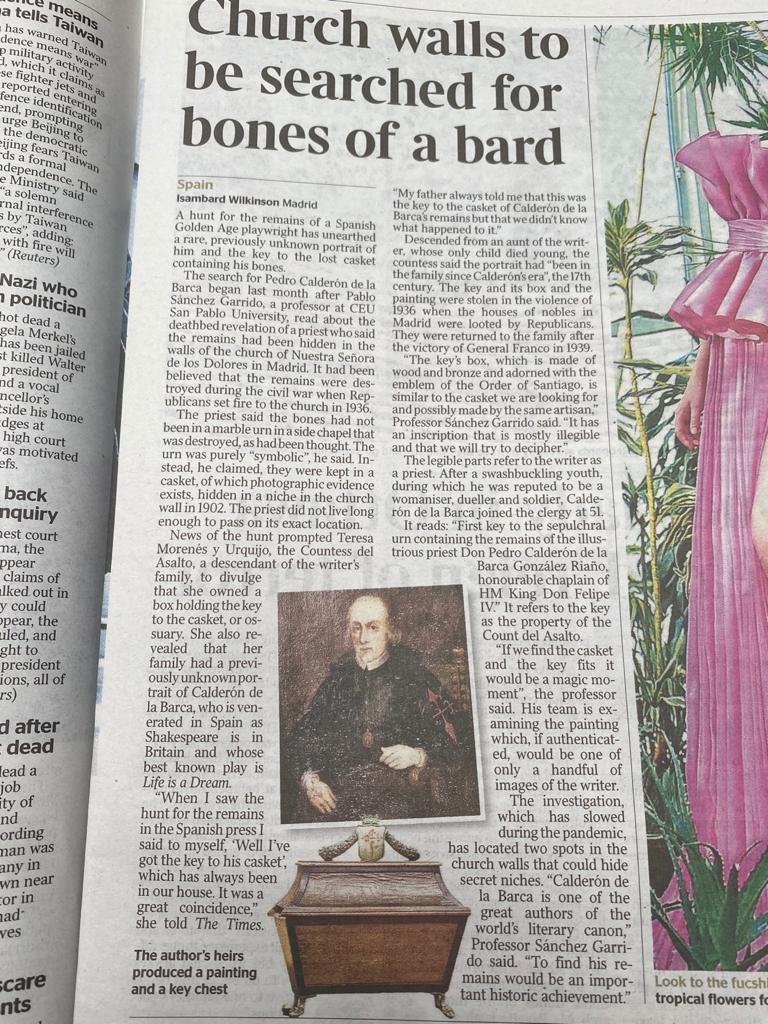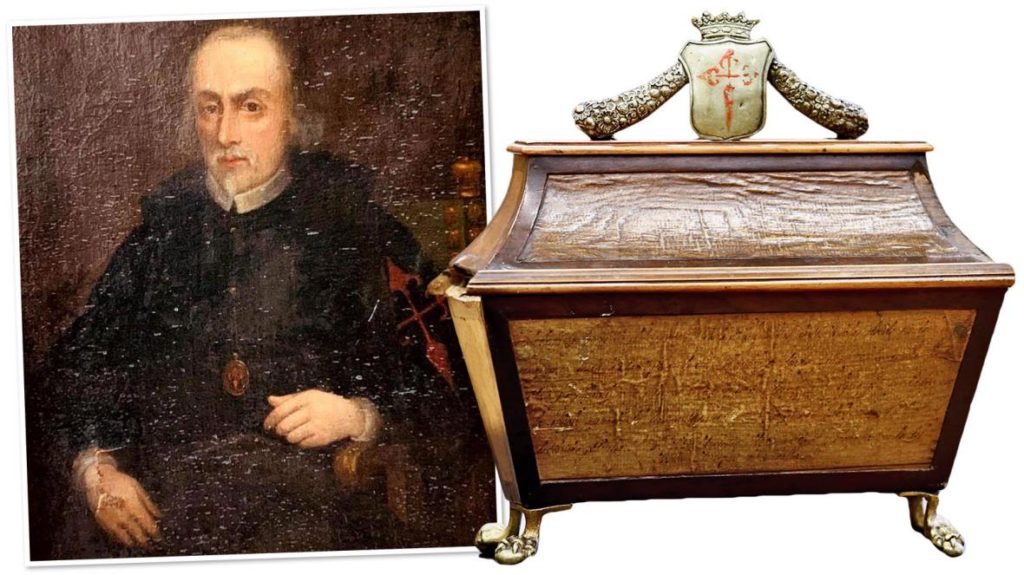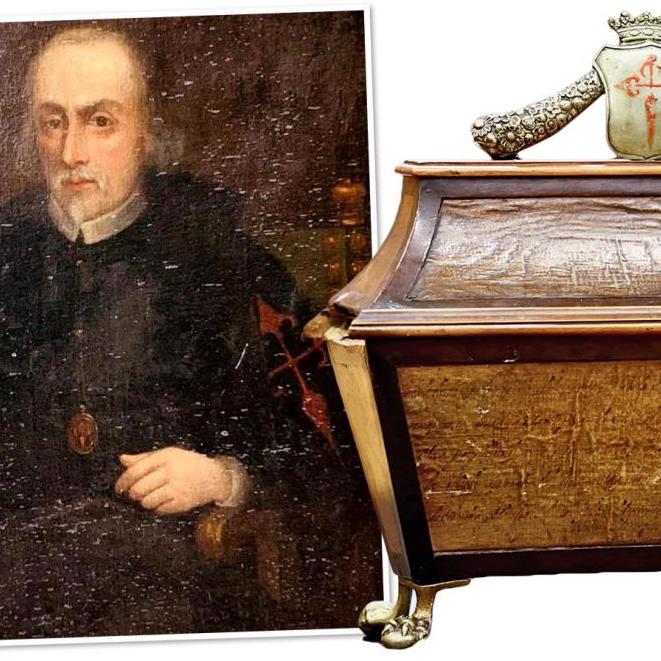
Isambard Wilkinson, Madrid
Friday January 29 2021
A hunt for the remains of a Spanish Golden Age playwright has unearthed a rare, previously unknown portrait of him and the key to the lost casket containing his bones.
The search for Pedro Calderón de la Barca, who died in 1681 aged 81, began last month after Pablo Sánchez Garrido, a professor at CEU San Pablo University, read about the deathbed revelation of a priest who said the remains had been hidden in the walls of the church of Nuestra Señora de los Dolores in Madrid. It had been believed that the remains were destroyed during the civil war when Republicans set fire to the church in 1936.
The priest said the bones had not been in a marble urn in a side chapel that was destroyed, as had been thought. The urn was purely «symbolic», he said. Instead, he claimed, they were kept in a casket, of which photographic evidence exists, hidden in a niche in the church wall in 1902. The priest did not live long enough to pass on its exact location.
News of the hunt prompted Teresa Morenés y Urquijo, the Countess del Asalto, a descendant of the writer´s family, to divulge that she owned a box holding the key to the casket, or ossuary. She also revealed that her family has a previously unknown portrait of Calderón de la Barrca, who is venerated in Spain as Shakespeare is in Britain and whose best known play is Life is a Dream.
«When I saw the hunt for the remains in the Spanish press I said to myself, «Well I´ve got the key to his casket», which has always been in our house. It was a great coincidence,» she told The Times.
«My father always told me that this was the key to the casket of Calderón de la Barca´s remains but that we didn´t know what happened to it»
Descended from an aunt of the writer, whose only child died young, the countess said the portrait had “been in the family since Calderón’s era”, the 17th century. The key and its box and the painting were stolen in the violence of 1936 when the houses of nobles in Madrid were looted by Republicans. They were returned to the family after the victory of General Franco in 1939.
«The key’s box, which is made of wood and bronze and adorned with the emblem of the Order of Santiago, is similar to the casket we are looking for and possibly made by the same artisan,” Professor Sánchez Garrido said. “It has an inscription that is mostly illegible and that we will try to decipher.”

The legible parts refer to the writer as a priest. After a swashbuckling youth, during which he was reputed to be a womaniser, dueller and soldier, Calderón de la Barca joined the clergy at 51.
It reads: “First key to the sepulchral urn containing the remains of the illustrious priest Don Pedro Calderón de la Barca
González Riaño, honourable chaplain of HM King Don Felipe IV». It refers to the key as the property of the Count del Asalto.
“If we find the casket and the key fits it would be a magic moment”, the professor said. His team is examining the painting which, if authenticated, would be one of only a handful of images of the writer.
The investigation, which has slowed during the pandemic, has located two spots in the church walls that could hide secret niches. “Calderón de la Barca is one of the great authors of the world’s literary canon,” Professor Sánchez Garrido said. “To find his remains would be an important historic achievement.”

CEU SAN PABLO UNIVERSITY

